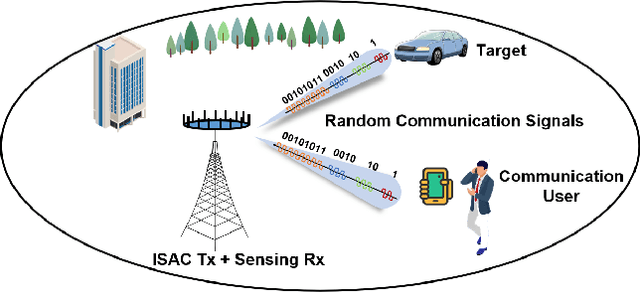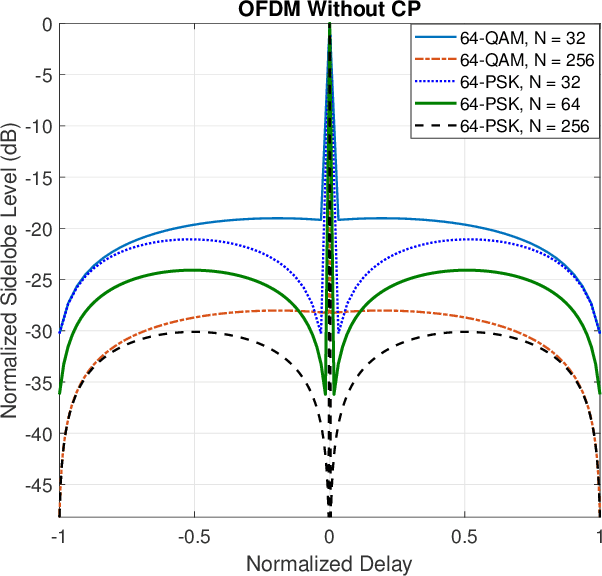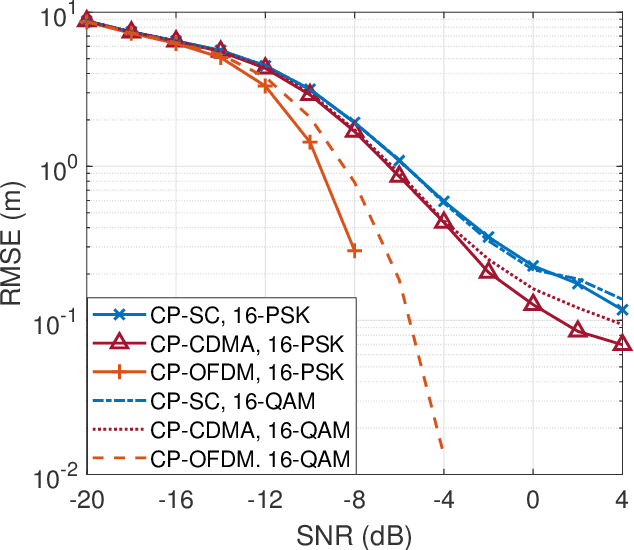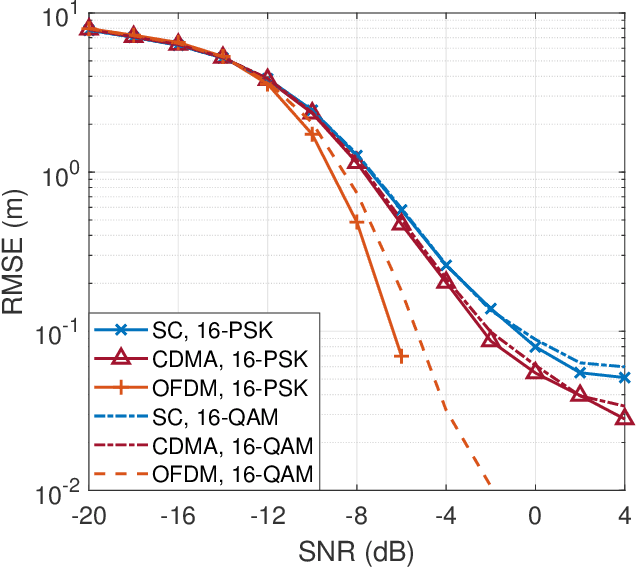OFDM Achieves the Lowest Ranging Sidelobe Under Random ISAC Signaling
Paper and Code
Jul 09, 2024



This paper aims to answer a fundamental question in the area of Integrated Sensing and Communications (ISAC): What is the optimal communication-centric ISAC waveform for ranging? Towards that end, we first established a generic framework to analyze the sensing performance of communication-centric ISAC waveforms built upon orthonormal signaling bases and random data symbols. Then, we evaluated their ranging performance by adopting both the periodic and aperiodic auto-correlation functions (P-ACF and A-ACF), and defined the expectation of the integrated sidelobe level (EISL) as a sensing performance metric. On top of that, we proved that among all communication waveforms with cyclic prefix (CP), the orthogonal frequency division multiplexing (OFDM) modulation is the only globally optimal waveform that achieves the lowest ranging sidelobe for quadrature amplitude modulation (QAM) and phase shift keying (PSK) constellations, in terms of both the EISL and the sidelobe level at each individual lag of the P-ACF. As a step forward, we proved that among all communication waveforms without CP, OFDM is a locally optimal waveform for QAM/PSK in the sense that it achieves a local minimum of the EISL of the A-ACF. Finally, we demonstrated by numerical results that under QAM/PSK constellations, there is no other orthogonal communication-centric waveform that achieves a lower ranging sidelobe level than that of the OFDM, in terms of both P-ACF and A-ACF cases.
 Add to Chrome
Add to Chrome Add to Firefox
Add to Firefox Add to Edge
Add to Edge